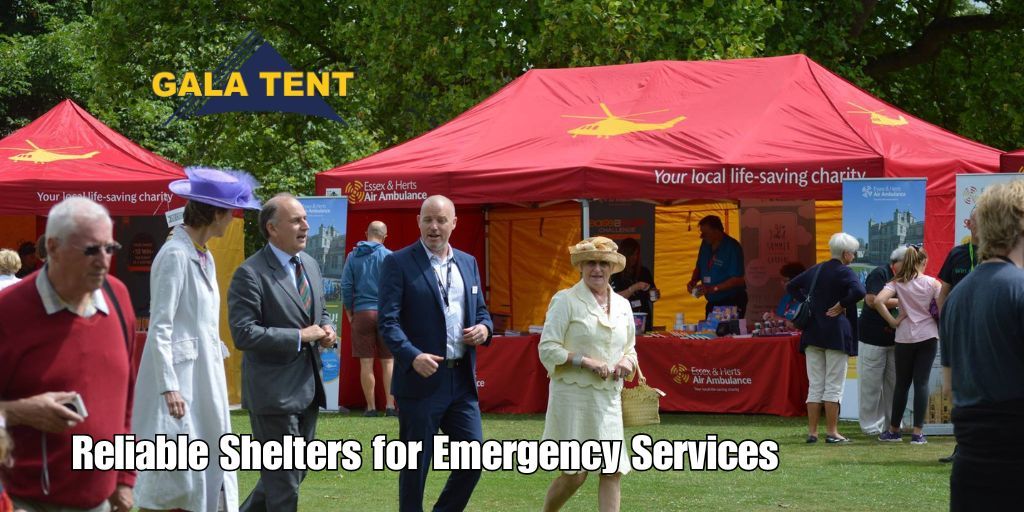The Ultimate Guide to Quick-Deploy Shelters for Emergency Services
Why Emergency Services Need Reliable, Quick-Deploy Shelters

Emergency services play a critical role in field operations, disaster response, and community support. Whether it’s setting up a medical triage station, a command post, or a temporary shelter for displaced individuals, having a reliable, quick-deploy shelter is essential. These shelters must be easy to transport, set up, and provide adequate protection against various weather conditions to support emergency responders and affected communities efficiently.
Types of Shelters for Emergency Services Operations
Emergency services require shelters that are adaptable, durable, and designed for rapid deployment in various situations. Here’s an overview of the most common shelter options:
-
Pop-Up Tents:
Pop-up tents are lightweight and designed for fast assembly, making them ideal for emergency response scenarios that require quick action. These shelters are often used as first aid stations, command centres, or rest areas for responders. They are available in various sizes and can be fitted with walls for added privacy and protection. -
Inflatable Tents:
Inflatable tents are another excellent option for emergency services, offering rapid setup with the use of an air pump. These tents are designed to be spacious, providing a flexible space for medical operations, temporary housing, or storage. Their durable, weather-resistant materials ensure they can withstand harsh outdoor conditions during extended use. -
Frame Tents:
Frame tents provide a more robust and stable structure, suitable for longer-term operations in emergency or disaster scenarios. They offer a large interior space that can be partitioned into sections for different uses, such as medical triage, administration, and supply storage. Frame tents are often used for community events as well, offering reliable shelter that can accommodate many people. -
Emergency Relief Shelters:
Specifically designed for disaster relief situations, these shelters are easy to deploy and made with high-quality materials to protect against extreme weather. They can serve as temporary housing for affected individuals, field hospitals, or food distribution centres. Their modular design allows for quick setup and flexibility in various field environments.
Key Features of High-Quality Emergency Shelters
When selecting a shelter for emergency services, it’s vital to consider specific features that ensure rapid deployment, durability, and adaptability in diverse conditions:
-
Quick and Easy Setup:
In emergency situations, every second counts. Opt for shelters that are designed for rapid deployment, such as pop-up or inflatable tents, which can be set up within minutes by a small team without the need for specialised tools. -
Durable and Weather-Resistant Materials:
Emergency shelters must be made from strong, weather-resistant materials, such as PVC-coated polyester or reinforced polyethylene, to provide protection against rain, wind, and UV rays. These materials ensure the shelter remains secure and functional in various outdoor conditions. -
Sturdy Frame Construction:
A reliable shelter requires a robust frame, typically made of aluminium or galvanised powder coated steel, offering stability and resistance to wear and tear. The frame should be lightweight yet strong enough to handle repeated use in different emergency scenarios. -
Portability:
Given the dynamic nature of emergency response, the shelter should be easily portable. Look for designs that include carrying cases or bags, making transportation and storage more manageable for field teams. -
Customisable Interior:
For shelters used in medical or command post settings, interior customisation is crucial. Shelters with modular walls or partition options allow emergency services to create separate areas for triage, administration, or storage, enhancing their operational efficiency.
Benefits of Using Quick-Deploy Shelters for Emergency Services
Reliable, easy-to-deploy shelters provide numerous advantages for emergency services operating in the field:
-
Rapid Response:
Quick-deploy shelters enable emergency teams to set up a functional base of operations in a matter of minutes, allowing them to respond effectively to various situations, from natural disasters to community support events. -
Enhanced Protection:
High-quality shelters protect responders and those they serve from the elements, providing a safe and comfortable environment. This protection is vital for operations that involve medical care, administration, or supply distribution. -
Operational Versatility:
With customisable interiors and flexible designs, emergency shelters can adapt to different operational needs, whether it's a field hospital, a command centre, or a temporary shelter for displaced individuals. -
Ease of Transport:
Designed for portability, these shelters are easy to transport to remote or disaster-stricken areas, ensuring that emergency services can set up wherever needed. Lightweight frames and compact storage options make them practical for quick deployment in unpredictable situations.
Tips for Choosing the Right Shelter for Emergency Services
Selecting the best shelter for emergency operations requires careful planning to meet the demands of field use. Here are some tips to guide your choice:
-
Assess the Operational Needs:
Consider the specific use cases for the shelter. Will it be used as a medical triage station, a command post, or temporary housing? Understanding its primary function will help you choose the appropriate size, design, and features. -
Prioritise Quick Deployment:
In emergency scenarios, setup speed is crucial. Opt for pop-up or inflatable tents that can be assembled in minutes, minimising delays in providing aid and support. -
Ensure Durability:
Look for shelters constructed with high-quality, weather-resistant materials and a sturdy frame. This durability is essential for shelters that need to withstand challenging conditions and repeated use. -
Consider Portability:
Choose shelters that are lightweight and come with carrying cases or bags. This feature is especially important for teams that may need to move the shelter to various locations quickly. -
Consult with Suppliers:
Work with reputable Gala Tent suppliers specialising in emergency shelters. They can provide expert advice on the best options for your organization's specific needs, ensuring you have a shelter that meets the demands of field operations.
Conclusion:
For emergency services, having a reliable and quick-deploy shelter is a critical asset in field operations, disaster response, and community support. By selecting shelters that are durable, easy to set up, and adaptable to various situations, emergency teams can operate more effectively and provide the necessary support to those in need. Whether used as a command post, triage station, or temporary housing, the right shelter makes all the difference in emergency response.







